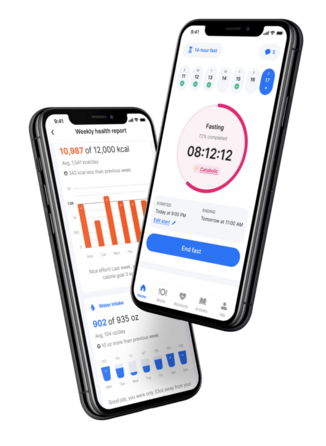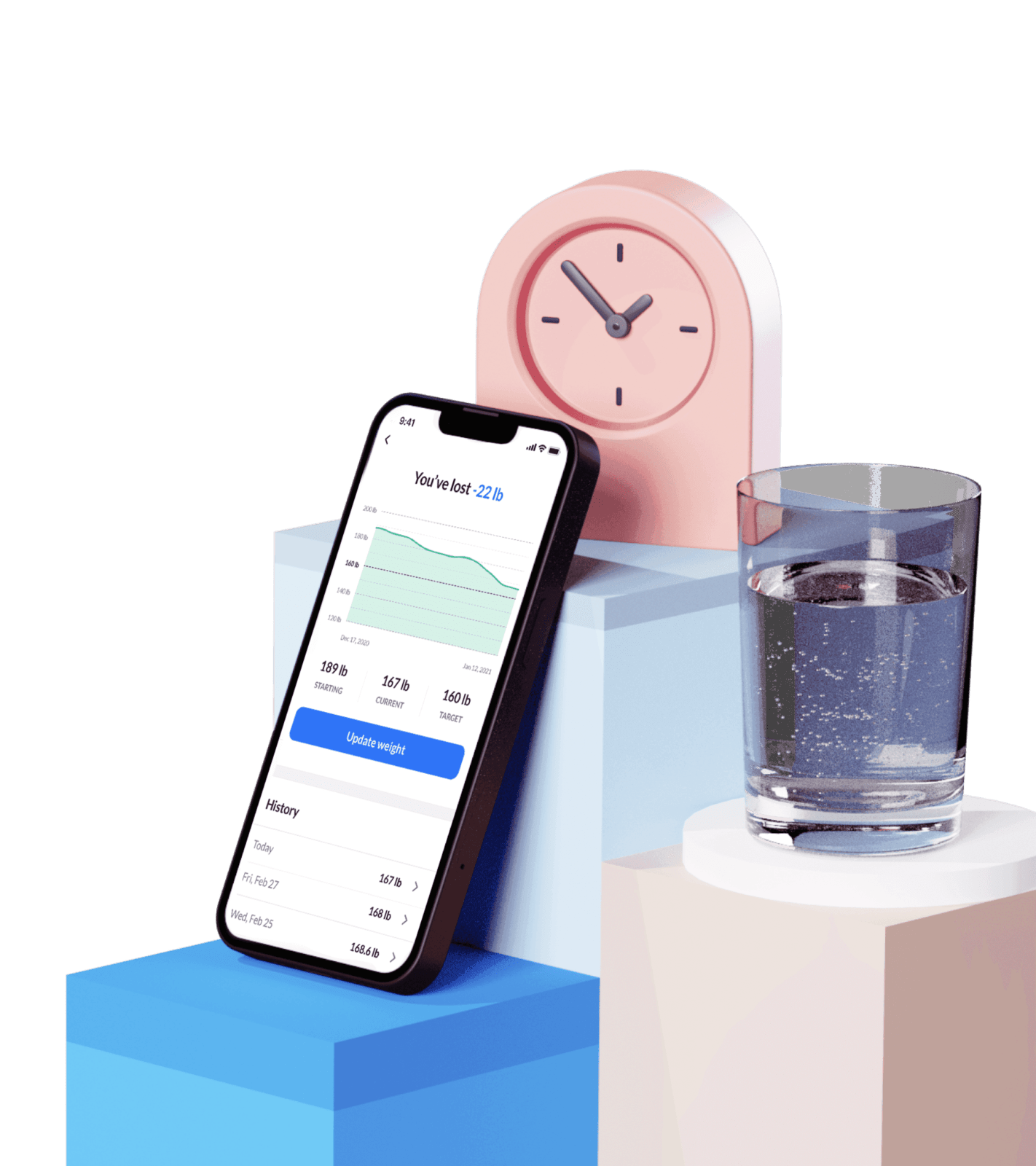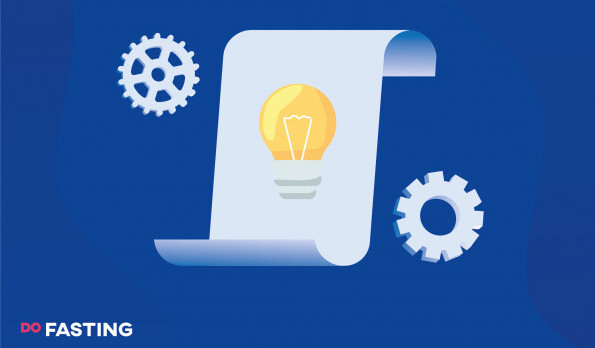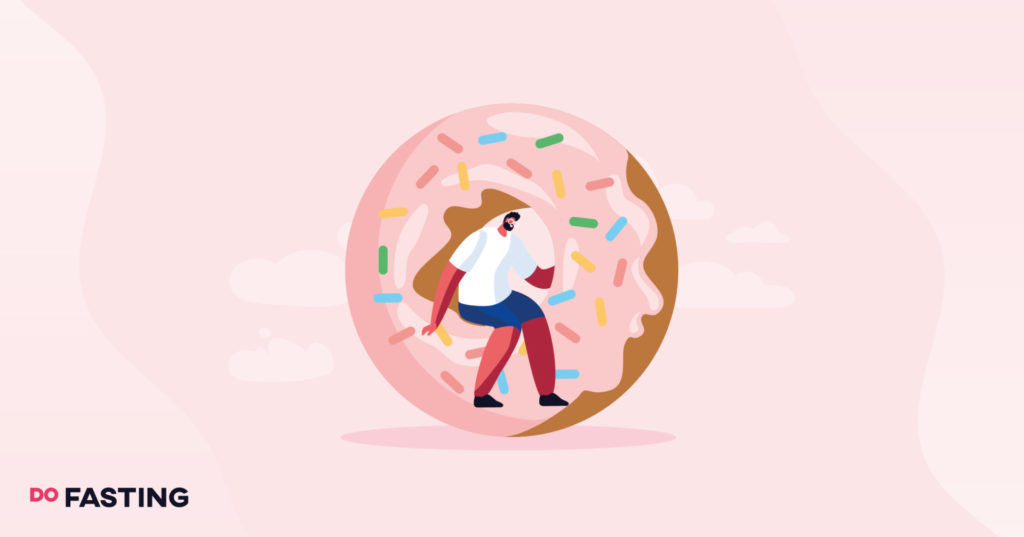Contents
How To Reduce High Blood Pressure by Fasting
Unfortunately, high blood pressure and other cardiovascular health issues are very common, with many adults suffering the adverse effects of diabetes, elevated blood pressure, and diseases related to the inflammatory process.
Research shows that one of the ways to treat such health problems is through significant lifestyle and diet changes, like fasting intermittently.
Thanks to an extensive study, it is known that fasting and blood pressure are closely connected: the beneficial effects of fasting on the body do lower blood pressure, as it increases parasympathetic activity in the body and cardiovascular system.
IF has also been found to positively impacts the gut’s microbiota, with some animal studies showing a potential connection between a healthy gut and lower blood pressure.
Plus, as you lose weight and burn fat through a fasting plan, your activity and exercise levels rise, contributing even further to healthy blood pressure levels.
In short, fasting and low blood pressure are directly linked as one of the best ways to change your lifestyle and body naturally. And you can even turn to fasting to prevent heart disease proactively before it happens.
Take a
1-minute quiz
and discover how much weight you can lose with DoFasting!

Find the Best Intermittent Fasting Schedule for You
Now that you know more about the effects of fasting on blood pressure and the heart, you may be wondering how to start your intermittent fasting journey.
There are several options open to you, depending on your lifestyle, work or activity schedules, and preferred eating habits.
Different fasting plans have different windows of time for calorie restriction and eating, depending on how long you can fast and the health benefits you want to achieve. Let’s discuss the most popular types of intermittent fasting.
5:2 Fast
An excellent plan for newcomers to the world of fasting, this plan includes five days of eating normally, followed by restricted caloric intake for two days. In these last 48 hours, you should consume between 500 and 600 calories daily.
This style of intermittent fasting is not as swift as other plans, but it’s a viable method for busy individuals or those who are just starting and need to get used to the fasting process in short periods.
12-Hour Fasts
Also a beginner-friendly method, this program follows a regular sleep-wake cycle regarding when you can and cannot eat. For instance, you can choose to fast between the end of your dinner at 7:30 p.m. and then break your fast in time for breakfast the next day at 7:30 a.m.
The key is fasting for at least 8 hours to let your body run out of blood sugar and turn to fat storage to sustain itself, giving you about half that time in a fat-burning, ketosis mode.
14:10 Fast
In this plan, you adopt a 14-hour period of strict fasting, offset by a 10-hour eating window to have your daily caloric allowance. These meals outside of periods of fasting should still follow a healthy diet plan, including plenty of proteins, vegetables, water, and limited carbohydrates.
Once you get into the habit of the 14:10 schedule, it can be straightforward to maintain and yield very effective results—particularly if paired with good activity levels and healthy meals outside of fasting!
16:8 Fast
By restricting your eating period to only 8 hours of the day, you can commit to 16 hours of vigorous fat-burning. Additionally, the frequency of the 16:8 method can be easily tailored into the rest of your schedule, be it once a month, twice a week, or even every day.
It’s best to stick to only low or zero-calorie drinks during your fast, like water and tea, and to only eat healthy, well-balanced meals during your 8 eating hours.
20-Hour Fasts
Also known as the Warrior Diet, this method is a fairly intensive way to incorporate windows of eating and restriction into your schedule. Essentially, you will embark on a 20-hour period of complete fasting, offset by only 4 hours of eating window.
During this time, make sure to have meals with complex fibers and proteins, and avoid items high in carbohydrates or sugars for optimal results.
24-Hour Fasts
This method is also referred to as One-Meal-A-Day (OMAD) and consists of just that—a full day of fasting before returning to a regular eating schedule.
However, this plan is also very flexible, as you can choose when the fasting period starts and ends based on your preferences.
For example, if you need to eat breakfast before doing some important activities, tailor your 24-hour fast to accommodate that. Alternatively, you can start it after dinner time and fast until the same time the next day.
While this is a great way to see some quick results, keep in mind that it is also a very difficult form of fasting, so it could be a good idea to try an easier alternative before going a whole day without food.
Alternate-Day Fasting
The alternate-day fasting method is a great way to help lower blood pressure, reduce inflammation in your blood vessels, boost metabolism, and stimulate autophagy for diabetes prevention.
With this method, you simply alternate the days when you eat and fast, resulting in a full day of restriction between 500 and 600 calories, followed by a day of eating normally.
Use the DoFasting App for Success
No matter the plan you choose, the DoFasting app can help you select a schedule tailored to your needs. It also includes recipes, timers for fasting and eating windows, and fasting-safe workouts—all you need to start your new eating habit confidently and with the guidance of a specialized team.
Do Not Overeat After a Fast
It might be tempting to “make up” for the things you couldn’t eat during whatever fasting window you chose, but don’t make that mistake!
When breaking your fast, avoid overeating or binge eating—instead, opt for well-proportioned, balanced dishes that will satisfy you and leave you feeling fuller for longer.
Overeating immediately after a fasting period strains your digestive and metabolic system, which has instant, adverse effects on your heart, blood pressure, and inflammation levels.
Increase Your Daily Mineral Intake To See Positive Results
Supplementing your diet with appropriate vitamins and minerals is often a good idea. And for those looking to lower their blood pressure levels, it might even be essential.
Crucial minerals that help blood pressure remain at healthy levels include potassium, magnesium, and calcium, which help with electrolyte imbalance. These supplements help relax the smooth muscles in the walls of blood vessels, helping them become wider and ultimately lower blood pressure.
If you struggle to eat enough foods high in minerals, such as spinach, fish, and legumes, consider taking supplements to compensate for electrolyte imbalance. However, always ensure your intake is balanced and based on the recommendations for the daily needs of these minerals, as an overdose can have serious side effects.
Reduce Your Blood Pressure by Eating More Healthy Foods
It’s important to pair fasting periods with preparing and eating nutrition-dense, well-balanced daily meals.
If you rely on processed food or meals high in carbohydrates after fasting, your body will not get the nutrients required to carry out its functions or keep blood pressure levels low.
A combination of good fats like olive oil, lean proteins, complex carbohydrates, whole grains, and fiber-rich fruits and vegetables is key when eating healthy meals.
Additionally, keeping your alcohol consumption low during fasting helps to reduce weight and high blood pressure.
Examples of great meals to supplement your intermittent fasting routine include:
- Oven-Baked Camembert with Salmon Salad — a delicious mixture of protein and healthy fats, paired with nutritious greens.
- Mediterranean Barley with Chickpeas — get your daily dose of fiber and complex carbs, along with a large serving of yum.
- Poached Eggs and Bacon on Toast — start the day with proteins, fats, and complex carbohydrates to keep you satisfied until lunch.
You can also find over 5000 fast-friendly and tasty recipes on the DoFasting app, ready for your next kitchen adventure.
Reduce Your Daily Intake of Sodium
While salty foods can be delicious, excessive sodium in your diet can be detrimental for your heart health and blood pressure levels.
To prevent this, try and choose the low-sodium options when shopping for groceries and avoid adding extra salt to your meals. Instead, lean into a variety of other flavorful seasonings, like paprika, ginger, or thyme.
Plus, a low-sodium diet also lowers cholesterol levels, assists in weight loss, and reduces your risk of kidney damage—it’s a win for every aspect of your health.
How Long Should You Fast Before Seeing Positive Results?
One of the most common questions about intermittent fasting is the time frame involved with the results.
And this is particularly true if you want to start your fasting journey to lower your blood pressure, as having even an estimated interval can motivate you to keep going.
While fasting results depend largely on factors like the type of fasting/feeding schedule you follow and your activity level, research has shown a fairly remarkable timeline of the effects of fasting on blood pressure.
Studies reveal that a group of individuals who fasted intermittently for a period of 4 to 21 days showed significant reductions in blood pressure levels, as well as weight and blood sugar levels.
Because of the metabolic switch experienced, the participants’ bodies went from burning blood glucose for fuel to burning fat to produce ketones, which became the new fuel, in a process that happened surprisingly fast.
This change triggered noteworthy changes not only in their weight but also in lowering their blood pressure levels, all with fasting periods and eating cycles revolving around 4 to 21-day plans, repeated as needed.
How Long Does Reduced Blood Pressure Stay For?
How long the effects of fasting on blood pressure remain tends to depend on an individual’s diet and lifestyle outside of the fasting windows, but there’s reason to believe that such results can stay prevalent.
For example, a study has shown that blood pressure dropped remarkably in patients who undertook intermittent fasting over a period of 4 to 41 days.
Most significantly, when a “normal”, healthy diet was reintroduced in phases over another 4 days, their blood pressure levels remained low, even after stopping heart disease or blood pressure medication to combat it.
Thus, the effects of fasting on blood pressure are sustainable if your overall lifestyle is well-balanced.
But low blood pressure levels and preventing heart disease are certainly not the only health benefits of fasting.
Take a
1-minute quiz
and discover how much weight you can lose with DoFasting!

3 Fasting Benefits That Improve Cardiovascular Health
Fasting for a healthy heart is a great way to change your lifestyle for the better. Experts recommend intermittent fasting for cardiovascular fitness, as it induces the process of ketosis (the shift from using glucose as fuel to fat-burning) and better metabolic processes that even help with other health issues.
Assists Weight Loss
As previously mentioned, intermittent fasting transforms the body into a fat-burning machine.
So, instead of merely shedding water weight during your progress, you are permanently removing body weight and fat stores for a long-lasting and total transformation, while reducing the strain on your heart and blood pressure as you improve your body composition.
Helps Control Diabetes
Entering ketosis with fasting does more than help you lose weight—it also helps to lower insulin levels, eventually normalizing blood sugars.
Understandably, this can be a major benefit for anyone with diabetes or blood pressure issues, as fasting can help control it naturally and easily.
However, people with this condition should consult their doctor before starting any kind of fasting, especially if they’re using medication.
Reduces Cholesterol
Among all the other benefits of intermittent fasting, medical experts agree that it also effectively reduces cholesterol.
Metabolic switching triggers fat-burning throughout the body, dramatically lowering cholesterol levels as fatty acids are converted to ketones. Without using glucose to fuel the body, fat becomes the primary source of energy and so the associated cholesterol levels are slashed.
Fasting Side Effects You Should Know When Starting Out
Intermittent fasting is much like other lifestyle changes, including fasting side effects for newcomers to this type of diet whose bodies might not be used to going without food for a while.
Short-term side effects that some fasting beginners might experience are mild, but can include the following:
- Headaches or dizziness.
- Fatigue.
- Cravings.
- Hunger.
- Weakness or shakiness.
- Irritability.
- Inability to focus.
- Sleep disturbance.
- Muscle pain.
- Digestion problems.
- Dehydration.
However, these side effects are often temporary, lasting only as your body adjusts to a decreased caloric intake. If these side effects become too disturbing for you, it might be good to ease yourself into the intermittent fasting lifestyle with an easier plan, and then work your way up to longer and longer fasts.
If you feel any severe side effects during the first days of your fast, consult with your physician for extra guidance.
Should You Try Intermittent Fasting?
The intermittent fasting journey is generally safe for most people, and the health advantages are certainly worth it, including the effects of fasting on the heart.
However, some groups have a more significant risk of developing problems during fasting, and should discuss other options with a doctor.
These groups include persons who fall under the following considerations:
- People with a history of eating disorders.
- At risk of a heart attack or stroke.
- Below the age of 18.
- Chronic illness sufferers.
- Diabetic.
- Heart disease.
- Insomniacs.
- Pregnant or breastfeeding.
- Taking certain prescription medications.
- People with deficiencies in the immune system.
Take a
1-minute quiz
and discover how much weight you can lose with DoFasting!

Conclusion
As we can see, fasting does lower blood pressure. Through better metabolic processing, lower cholesterol, and weight loss, the effects of fasting on blood pressure and preventing heart disease are noticeable and positive.
And with some simple changes, like healthy meals, less sodium, and a lifestyle change for the better, you too can benefit from the vast array of benefits offered by intermittent fasting.
See how DoFasting will improve your life
Find out what works for you with this 60-sec quiz approved by our experts and get your personal revolutionary fasting assistant.
Start the Quiz
This is an evidence-based article that includes scientific citations. DoFasting’s professional writers and editors prepared the content, which a team of medical experts verified to be accurate.














